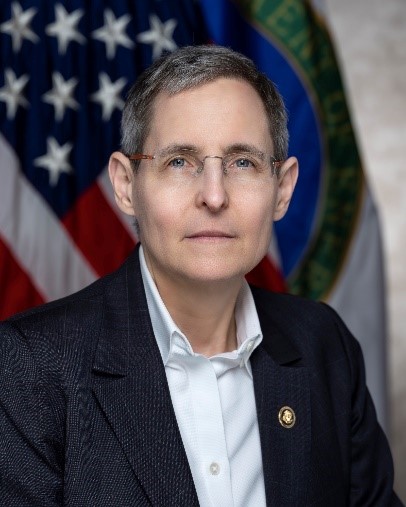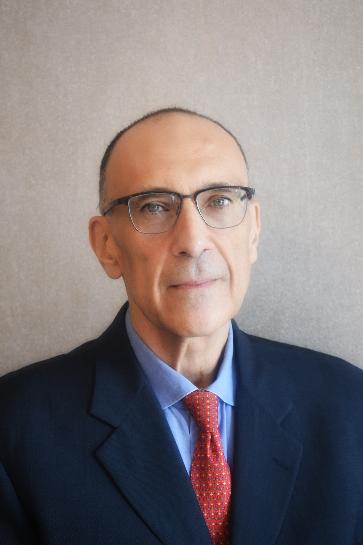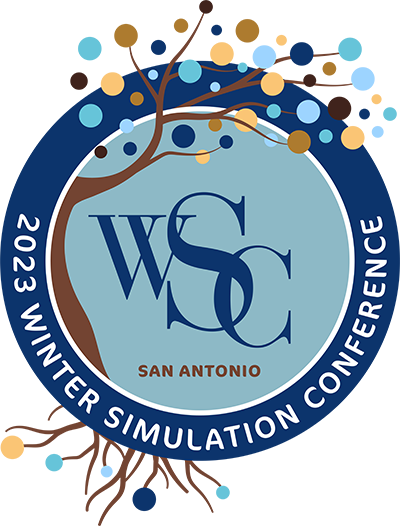
Ann Dunkin
2023 WSC Keynote Speaker
Modeling for Energy Resilience: How DOE Uses Simulation to Model and Manage Everything from the Power Grid to the Strategic Petroleum Reserve
The U.S. Department of Energy’s responsibilities run the gamut from managing the nuclear stockpile and the strategic petroleum reserve to running the power grid in 36 states to performing basic and applied research to protect national security, ensure stable power sector operations and accelerate the clean energy transition. Leveraging the power of DOE’s computing infrastructure, including the world’s fastest supercomputer, simulation models are used to accelerate advancements in nearly every field of research across DOE. Through a series of examples highlighting grid management, cybersecurity, cavern modeling and fundamental physical phenomena, this keynote will illuminate how DOE applies modeling and simulation to both research and operations.
2023 Titans of Simulation

John Fowler
Motorola Professor of Supply Chain Management
W.P. Carey School of Business
Arizona State University
Resilience of Supply Chains and the Role of Simulation
Supply chain resilience refers to the capacity of a supply chain to proactively prepare for unforeseen events, effectively address disruptions, and bounce back from them while ensuring the sustained smooth operation of the supply chain at the preferred level of connectivity and management of its structure and functions. Recent disruptive events including the Covid-19 pandemic and the Russian invasion of Ukraine have caused an increased emphasis on supply chain resilience. In this presentation, we discuss strategies to prepare for, address, and bounce back from (potential) disruptions and the role that simulation can play in enhancing supply chain resilience.

Enver Yücesan
Professor of Information Management
INSEAD
Ensuring Food Security under Climate Change: How Simulation Can Help in Making Agricultural Supply Chains More Resilient
Climate change and the resulting increased frequency of unpredictable extreme weather events create new operational challenges for the commercial seed industry, which is a key pillar of a sustainable and secure global food supply. More specifically, extreme weather events translate into two main effects on agricultural production: higher yield variability and lower expected yields. In recent years, extreme weather events already caused reductions in the yields of cereals, maize, and other staple crops. It is also projected that a warming of +2C (+4C) would increase the coefficient of variation of corn yield by 62% (192%) in six countries that collectively account for 73% of global production. In this presentation, we first examine how the increased likelihood of extreme weather events affects agricultural supply chains in terms of R&D, production planning, contracting, allocation, and storage decisions. We then discuss the key challenges associated with each stage and highlight how simulation can help address them under increased volatility.
MASM Keynote

Hans Ehm
Senior Principal Supply Chain
Infineon Technologies AG
Simulation, Optimization and AI for Semiconductor Manufacturing and Supply Chains:
Four Decades of Progress and a Vision for the Future
Semiconductor manufacturing and supply chain processes are one of the most complex but can be considered at the same time also as one of the most rewarding processes in the world. In thousands of detailed unit chemical and physical processes in cleanrooms and under statistical process control chips on wafers emerge and are assembled and tested to components. The Modeling and Analysis of Semiconductor Manufacturing (MASM) conference embedded in the annual Winter Simulation Conference (WSC) was, is, and will be key to understand the optimization and simulation challenges in this domain.
The operating curve management targeting a low variability value and thus enabling a low flow factor – thus speed – and high utilization – thus a good cost position – at the same time has been an early achievement. With discrete-event, agent based, and system dynamic simulations on the four levels (machine, fab, internal and external supply chain) solution options for complex interactions could be proposed based on sophisticated mathematical models running on simulation testbeds like the MIMAC models and their successors. Accurate planning and advanced scheduling, available to promise (ATP) generation and usage with traditional or artificial intelligence (AI) / deep learning (DL) methods requires a huge amount of real data or qualified synthetic data (QSD).
The semantic web for semiconductor and supply chain containing semiconductors bears the potential to enable the provision of those urgently needed QSD in volume, (integrated) complexity and accuracy needed. Quantum bit (qubit) based algorithm could provide the speed for the next and over-next generation for optimization and simulation in our domain.
Military Keynote

Imre Balogh
Research Associate Professor and Director, MOVES Institute
Naval Postgraduate School, New Mexico State University
Creating Live Virtual Constructive Environments to Evaluate Human and System Resilience
Live Virtual Constructive (LVC) exercises are becoming ubiquitous for training and mission rehearsal in the Military domain because the use of LVC provides the most realistic environment available short of actual military operations. The mixture of live exercises with simulated components (constructive simulations and virtual simulators) allows for the creation of a context for the training or rehearsal that is richer and more representative of the real world than would be possible with only live events. This ability to embed live activity into synthetic environment to provide realism has attracted the interest of the Test and Evaluation community (T&E) and recently there are increasing efforts to start including LVC in the T&E tool suite. I’ll discuss some of the work we have been doing at the Naval Postgraduate School with LVC and look at how these environments can be used to assess and improve system and human resilience in operational environments.
